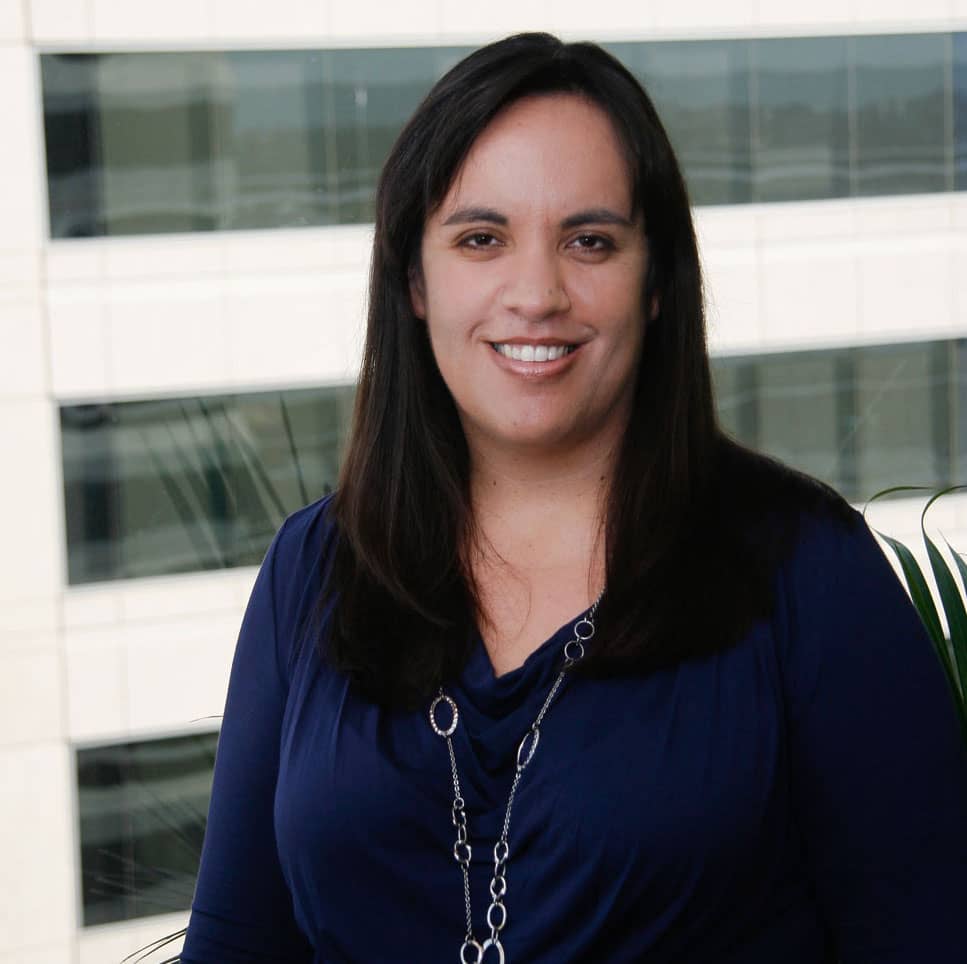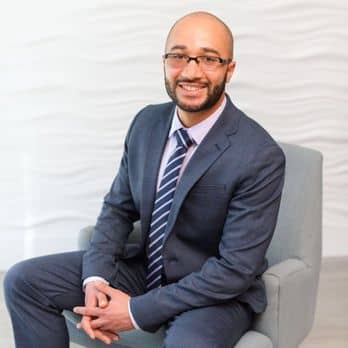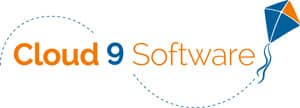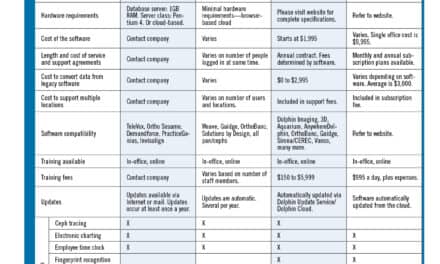DISCUSSING TECH TRENDS IN ORTHODONTICS WITH ALISON WERNER AND DR DAVILLIER



Alison Werner, chief editor of Orthodontic Products, is joined by Christian Davillier, DDS, MPH, an orthodontist and practice owner. He shares his thoughts on technology and treatment trends impacting how orthodontic offices operate their business and improve patient care and outcomes. Hear about practice management software, aligner therapy, teledentistry tools, and 3D printing advancements in this episode from the MEDQOR Podcast Network.
View Transcript
Bryce Lochmann (BL): Welcome to the MEDQOR Podcast Network. The MEDQOR Podcast Network provides insights, reporting and analysis on med-tech innovation across all of healthcare. Thanks for listening as we discuss technology and treatment trends ranging from orthodontics to sleep medicine, to radiology and more. We’re proud to be supported by 10 leading brands in healthcare whose chief editors will join us on a recurring basis to talk with key leaders in their industries about what’s happening across all of healthcare. My name is Bryce Lochmann, the producer of this new podcast. And today I’m glad to be joined by Alison Werner, Chief Editor at Orthodontic Products, who’s going to kick off our Podcast Network with a conversation with Dr. Christian Davillier, an orthodontist and practice owner in Suffolk, Virginia. Alison, can you share with the listeners a bit about you and your brand?
Alison Werner (AW): Well, I’ve been with Orthodontic Products for about 12 years now and 10 of those years as Chief Editor. Our long-time publishers, Jacques Montague, who retired a few years ago, always said Orthodontic Products was about bringing orthodontist news about the latest products and innovations that they could learn about today and implement tomorrow. But more than that, we try to keep our readers up on the latest trends of the industry, which today are anything from remote monitoring technology and virtual consults to the growth of OSOs, and really how direct to consumer aligners are affecting the industry. So it’s a range of issues that we’re covering.
BL: When we first started discussing this podcast, we saw it as an exciting way for editors and thought leaders to help highlight great stories from doctors and healthcare professionals who might be using new technologies or services to streamline and improve patient care and patient outcomes, but also better manage their businesses. I know you recently spoke with Dr. Christian Davillier on this. What can we expect from your conversation with him?
AW: You know, I really enjoyed talking with Dr. Davillier. He’s a young doctor, who after a few years, as an associate just opened his first solo practice, last year, during the pandemic, so he talks a little bit about that to us. But then it was really great to talk to him about why he wanted to do an associateship before going solo. You know, residents coming out, they have a lot more options now in terms of how to start their careers. And he talks to us about why he really wanted to do an associateship, and I think it’s a great lesson for a lot of young doctors. But then we also talked about what he’s excited about in terms of technology and how it’s evolving in orthodontists. And then we dug in a little bit deeper into his practice management platform and why it’s so important to him to be working in the cloud to manage his practice. So I really think listeners will learn a lot from him and gain some insight into how they can be using technology going forward.
BL: I’m excited to learn. Let’s get to it.
AW: Dr. Davillier, can you tell us about your practice? How long have you been practicing and what’s the area where you are practicing like?
Christian Davillier (CD): So I finished residency in 2017. I initially practiced actually in Pensacola, Florida for a bit before transitioning up to Virginia Beach in 2019, and I kind of went solo on my own October of 2020. There it’s kind of suburban, kind of rural. I’m in Suffolk, Virginia currently.
AW: You’ve been in this office since October, which means you set up during the pandemic.
CD: During the pandemic, yeah.
AW: What was that experience like? How far along were you in the process when the pandemic hit?
CD: So when it hit, probably I would say I had signed the lease, but we had not yet broken ground yet, because it is a sort of a new retail location, so construction hadn’t begun. So I think, with everybody, just sort of maybe a slight panic set in. You know, how is this going to work with the pandemic? And then of course the shutdown came in March, so at that point really kind of started sweating to see how was this all going to kind of play out and fold out. But in end, things kind of progressed, maybe a little slower on the construction side than I would’ve hoped, but by October 2020, we’re ready to open up and and that’s what we did.
AW:
Great. So, when you signed the lease in March, were you still practicing down in Florida or were you already up in Virginia?
CD:
I was up in Virginia Beach associating for another doctor? Yes.
AW:
Oh, okay great. So, you practiced for about three years though, before you set up this practice?
CD:
Absolutely.
AW:
You went into an associateship. Why did you decide to do that right out of your residency?
CD:
Associating, really just to get more experience on the business side. Through residency we get all of the clinical training, all the skills we need to actually move teeth, but there’s not a lot of business aspect that goes into it. So I kind of felt that it was something that I needed to get out there and really experience, before I kind of jumped in, jumped into waters on my own.
AW:
What were some of the lessons learned from that experience of working at that practice, that you took into your practice?
CD:
A lot of things. What you want to do and also what you don’t want to do.
AW:
Exactly.
CD:
So, people kind of run their businesses the way they see fit, but you kind of pick and choose. You know, they do this really well, they could maybe do this a little better, and so what you hope is that you kind of take the things you want to do better and take that as you transition into your own practice.
AW:
So, what makes your practice stand apart? What is your goal there or where do you feel you are at this point?
CD:
I’d say our goal really is to make people smile. I mean, I think that’s kind of cliche, but really that’s what it’s all about. We’re here to really make folks smile and really change lives. I mean when people put their best face on, you see, when you first get that smile, that first impression, that really puts someone ahead of the game in this world. So I think what really sets us apart really is just really focusing on our patients, making sure that they really have a great, positive experience here at Davillier Orthodontics.
AW:
Let me go back a little bit. Why did you decide to go into orthodontics?
CD:
I would say actually it’s more so on the theory side, I really like the biomechanics of tooth movement.
AW:
Oh, okay.
CD:
There’s a lot of physics involved in that, which is just a course that I actually enjoy back in college.
AW:
Okay. So what modalities or what do you enjoy about orthodontics right now, in terms of the technology or the way you’re practicing clinically? What excites you?
CD:
Yeah, really the technology and really the shift towards, I would say more technology in orthodontics. Just kind of, we’re really in the phase of going from analog to complete digital. Aligners of course, I want to say maybe 20 years now, since the advent of clear aligners therapy within Invisalign. But of course now, I mean they are five or six companies now that are doing clear aligners, and not only that transition, but now we’re getting to the point where a lot of offices are doing their own printing, you know with 3d printers in office, even getting to the point where a lot of our brackets are now being custom, so we’ve got 3D custom brackets that are tailored to each individual patient and each individual tooth.
AW:
Right, exactly. So when you opened your practice, what were some of the technologies you were really focused on implementing?
CD:
Initially, really being in the cloud. I really didn’t want to have a server on site, you know there are a lot of technical complications with hosting Os, and I really want to have access to my business and to my patients, really, wherever I went. I can access it at home, I can access it in a restaurant. If I’m halfway across the world, if I’ve got a browser, internet connection, you know I can get in and kind of see how things are moving. And besides that, really focusing on clear aligners, which is an aesthetic option that most patients are really looking for these days.
AW:
Right, okay. So, in terms of that technology and being on the cloud, what are you using in terms of your practice management software at this point?
CD:
Currently, Cloud9.
AW:
Okay. Had you had any experience with it before you opened your practice?
CD:
I did, yeah. Actually, as an associate in Florida, that practice actually used Cloud9. So when I was starting to look into opening on my own, I looked at a few different platforms, but really I saw that Cloud9 really had the best practice management platform, in my opinion.
AW:
Okay. What parts of Cloud9 stand out to you? Is it the way it helps you with the clinical workflow, with the financial management, the patient communication, what there stands out to you?
CD:
I think really it starts because it’s really a true cloud platform. So some of the other systems were really server-based systems, that they’ve kind of built the cloud application kind of on the back-end. But Cloud9 was really built from the ground up to be in the cloud. Like I said, if you’ve got a browser or internet connection, you can hop on. But besides that, really just the ease of use and user functionality. I mean, you really can log in and kind of navigate things, it’s really not very complicated. If you got new staff members, you can really get them up to speed, I mean really within two, three hours and they’re scheduling patients and they’re kind of rocking and rolling.
AW:
Okay, great. I mean, staffing is a big issue right now for dental in general, but also for orthodontists. Are you having any staffing issues and how does your practice management system play in and the ease of use?
CD:
Yeah, I think probably more so over the summer we had a few issues. We were using a few platforms to try and recruit staff. At that time I think most businesses can probably attest to this, there was a bit of I guess you call it ghosting going on. So we’d schedule interviews, we’d talk to folks, but then when it was time for them to come in it’s kind of a look for me type of situation. But we’ve got a great staff now, so we found the right people, and really just getting them on board and in the system with Cloud9 it’s just really simple and really easy.
AW:
Okay, great. How are you using it, personally, in that clinical workflow? How does it serve you there?
CD:
Probably mostly just the efficiency standpoint, just making sure that the scheduling is situated to where the doctor is where it needs to be, when he needs to be there. Of course we’ve kind of got a chart on the side where you can kind of see, you know, do I need to go to chair one, chair two, chair three? How long have these patients been waiting? They’ve been waiting five minutes, they’ve been waiting 10 minutes? So really I can kind of gauge that and be exactly where I need to be to keep things moving.
AW:
Okay. You own your practice, correct?
CD:
Correct.
AW:
So in terms of, as the owner from the business side, where does it serve you there?
CD:
I would say that really for all the functionality we get, it’s really a great price point. And again, being cloud -based, again, there’s no server on site, that’s another big financial aspect there, and there’s no maintenance on site. Not only that, I don’t have to have backup drives on site. I don’t have to back up all the data every night. I think traditionally the owners would back everything up at night in the office, they then take that drive to their home, back it up on another server, so you never lose that patient data. But with Cloud9, I just log out and I’m good to go.
AW:
Okay. Are there any tools within the software that you like using from kind of managing your practice from a financial standpoint, kind of keeping track of my metrics?
CD:
Probably moreso the reporting aspect. We run daily reports just to see how our production is going, how our collection is going. It’s really just one, two clicks and I’ve got all the information that I need.
AW:
Oh, okay. Okay, great. And then you said your staff has had a good experience in terms of onboarding.
CD:
Yeah, definitely.
AW:
And getting up to speed within a couple of hours. What do you hear from them in terms of the features that they like in terms of maybe communicating with patients or anything like that?
CD:
I think probably a big thing with the staff is the appointment reminders. It’s kind of set up in the background, it’s automatic. Like I said, traditional systems, if they don’t have that aspect, the staff would be calling every patient the day before, to make sure they’re coming, calling every patient to remind them a week ahead of time of the appointments. Whereas here it’s all automated, we set it on a schedule, so the system sends everything out and we really don’t have to worry about it.
AW:
So, moving away from practice management software, are there any other technologies that you are looking at or that you’re excited about for the future, or that you would like to see kind of come into the orthodontic workflow?
CD:
Probably more 3D printing and it’s already happening. I don’t currently have it in my office, but definitely within the next year or two, definitely be looking to acquire a printer and really start to print some of my own clear aligners. With that, because we kind of do same day starts with traditional brackets, we can do a same day start with clear aligners as well, if you have that printing capability. Even outside of that, we starting to use, like I said, 3D custom brackets. So I’m not sure, you know maybe a few years down the line, we can actually print an individual bracket, for individual patient, individual tooth, in office, and place those brackets on that patient that very same day.
AW:
Yeah. Do you think that ability to one, offer same day, but also to give the patient really this idea of custom, do you think that that’s what today’s patient is looking for, the consumer?
CD:
Absolutely, it’s all about customization. Well at least the consumers is really not looking for a stock, generic product anymore. You know, they want something that’s specifically for them. And really it cuts down on treatment time, it’s very efficient, it makes things a little more comfortable and seamless, and it flows.
AW:
With the pandemic, were there any kind of technologies that maybe you weren’t expecting to want to use in your practice, that you have adopted. You know, we talked about the practice management software, but are there any other technologies? Because I do know that orthodontists implemented like virtual consults to be able to deal with closure, there’s the remote monitoring. Is there anything like that, that you’re using in your practice or anything that the pandemic made you think, “Okay, I’ve got to be prepared for this?”
CD:
Really virtual consults, really wasn’t expecting it. I wasn’t expecting it to be effective. We don’t currently offer virtual consults here, but it’s definitely something that I’m looking to implement in the future. But what we did do is two-way text has become vital. So instead of sending email reminders, really it’s again a custom direct communication, a direct link. I mean the data shows, if you send an email, it may get read in 10 minutes, it may get read in 30 minutes, it may be read tomorrow, but if you send someone a text it’s typically read within 5 to 10 seconds. So we’re able to actually have that dialogue, that immediate dialogue with our patients, and actually it’s been extremely vital during the pandemic and even now.
AW:
Yeah, I would imagine, because I know personally from my standpoint, like I do respond to text.
CD:
Yeah, if I get an email, I’ll check that later.
AW:
Exactly, and then it’s 100 messages later and I’m not going to see it.
CD:
It gets lost in the shuffle, yeah exactly.
AW:
But no, I think that’s meeting the consumer where they are at this point.
CD:
Yeah, exactly.
AW:
And adopting those technologies that they’re used to in other parts of their lives, so why wouldn’t they expect it with their orthodontists?
CD:
I think if you look just around in general, it’s in our hands constantly.
AW:
Yep, exactly. So, before we wrap up, what excites you about the future of orthodontics?
CD:
I would say really customization in the technology going forward. I think in the past some of these companies, you know coming forward, and the orthodontist wasn’t at the forefront, we didn’t necessarily have complete control over the product or the patient outcomes. But now with 3D printing we’re getting to the point where we can print those aligners in our office, so we have control of that. We can dictate the movements there. We can dictate patient outcomes and the efficiencies. Even we’re getting to the point now with customized 3D brackets, again we can print those brackets in office. We’re really in control and I think it’s going to lead to really, really great patient outcomes in the future.
AW:
Great. Well, thank you for speaking with us today. It’s been a pleasure.
CD:
Thank you. It’s been a pleasure
BL:
And that will do it for our first MEDQOR Podcast network episode. I hope you enjoyed Alison and Dr. Davillier’s conversation. For more orthodontic-focused content, please subscribe to our daily or weekly newsletters linked in the show notes. As for future podcasts, coming up we’ll have appearances from Keri Stephens, Chief Editor with Access Imaging in 24×7 Magazine, covering global radiologic trends and the healthcare technology management field. We’ll also be joined by Karl Strom, Editor in Chief of The Hearing Review, covering all things audiology. So please be sure to like and subscribe to our podcast on either Apple, Spotify, Google, or Amazon Podcasts or wherever you like to listen. Thanks for tuning in.
Sponsored by
Medqor is committed to protecting and respecting your privacy. We may contact you about our products and services or share information with sponsorship partners, as well as other content that may be of interest to you. By submitting your information, you consent to us contacting you for this purpose in accordance with our privacy policy.
For further information, please check out our privacy policy here














